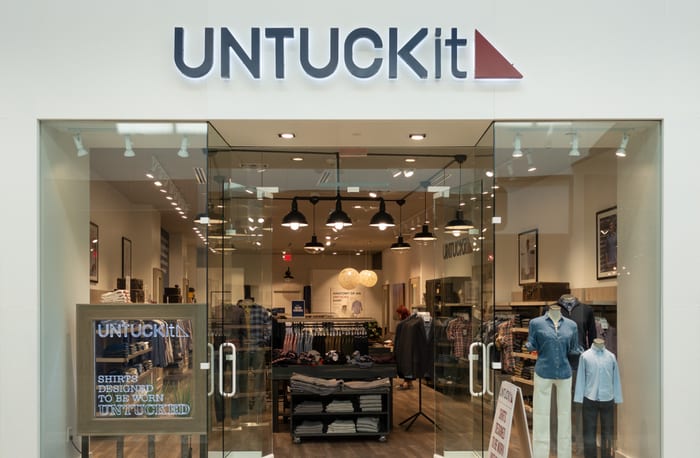
As traditional mall merchants go under, online brands are expanding into brick-and-mortar, the New York Post reported Saturday (Nov. 23).
More than 1,700 physical stores in the U.S. were digital merchants first, the Post reported, citing Fifth Wall and Thinknum Alternative Data.
One example is New York’s UNTUCKit, which started as an online men’s clothing store and grew into a global brand. It now has 85 stores and will soon add another when its Milwaukee location opens.
“Opening in a mall is great for our brand because the customer gets a much stickier experience, and your long-term value grows,” UNTUCKit founder Chris Riccobono told the Post. “Malls are going to become more exciting as some of the old retail guard clears out, and the new guard moves in.”
He said when the company launched in 2011, the “buzz” pointed to a shopping future without physical stores. It didn’t take the company long to realize that a large percentage of its customer base “… will simply not buy until they get to touch and feel the product in the stores.”
Upscale men’s footwear brand Taft also started as online-only and grew in popularity on Instagram, where it has over 500,000 followers. It still sees the need for a physical store and is opening its first one on Prince Street in the Soho neighborhood of Manhattan.
“Brick-and-mortar retail isn’t dying, it’s evolving,” said Sharon Lim, CEO of Browzwear, an apparel designer firm headquartered in Singapore.
Coresight Research said in May that nearly 6,000 stores left physical locations since the beginning of the year. That was more than all of 2018, which had 5,900 closings. Investment firm UBS estimated that 75,000 brick-and-mortar stores would likely shut down by 2026.
UBS also reported in April that online shopping by the average U.S. household went up almost 50 percent from where it was five years earlier. The report also noted that online shopping is expected to make up 25 percent of retail sales, with around 16 percent of overall sales made online.